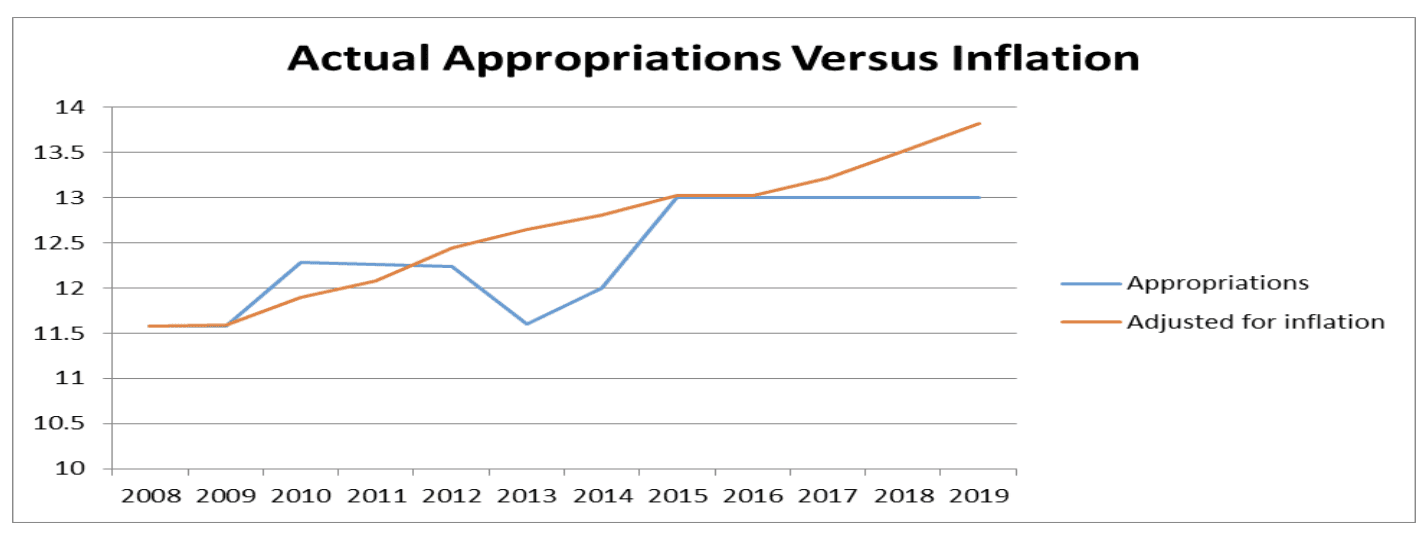Background/Funding History
The Client Assistance Program (CAP) is authorized under the 1984 amendments to the Rehabilitation Act. CAP was established to protect the rights of individuals with disabilities who are eligible to receive services from programs funded through the Act. CAP works primarily with clients seeking or receiving services from the Vocational Rehabilitation (VR) system, the single largest program funded under the Rehabilitation Act. CAP can also advocate for individuals eligible for services from an Independent Living Center or other Rehabilitation Act funded programs.
CAP is funded through the U.S. Department of Education, Rehabilitation Services Administration. While demand for CAP services has increased, CAP has either been level-funded or cut every fiscal year except three since Fiscal Year 2003.
Two of the increases during this time were targeted for the CAP program to ensure people with a disability are being employed in an integrated setting, and to address the problems highlighted in NDRN’s report Segregated and Exploited, where people with disabilities are forced to work in substandard conditions at less than minimum wage.
NDRN recommends a funding level of $16.0 million for Fiscal Year 2020
Current Program Responsibilities
CAP’s role continues to expand as the program assists more people with disabilities to negotiate the ever-changing employment and training systems. For example, under the Workforce Innovation and Opportunity Act CAP will be playing a key role in ensuring effective transition from school to higher education and competitive, integrated employment for children with disabilities as well as implementation of Section 511 of WIOA to prevent individuals with disabilities from automatically being placed in subminimum wage employment. In order to ensure effective implementation of these new critical requirements under WIOA, CAP requires increased funding.
According to the United States Bureau of Labor Statistics, the unemployment rate for people with a disability is about twice as high as the rate for individuals without a disability. The labor force participation rate for people with disabilities is approximately 20%. This extremely low participation rate not only harms people with disabilities, but also the overall economic and fiscal health of the nation.
CAP advocacy services are vital to assisting people with disabilities re-enter or enter the workforce and receive the wide range of Rehabilitation Act services necessary to be economically self-sufficient and live more independently in the community. When people with disabilities obtain jobs, this reduces their need to remain on government benefits and helps the overall economy.
While the VR system works well for some people with disabilities, it has not been effective for many individuals with mental, cognitive, or significant physical disabilities. CAP plays a very important role for those individuals who need an informed advocate to help them get services leading to employment.
Additional unmet needs could be met by CAP if funding were increased, such as assistance for veterans eligible for vocational rehabilitation and employment services through the department of Veterans Affairs. Increased funding would allow CAP to better address the vocational rehabilitation needs of veterans returning home from the wars in Iraq and Afghanistan.
For more information, contact Amanda Lowe at 202-408-9514 or Amanda.Lowe@ndrn.org.

